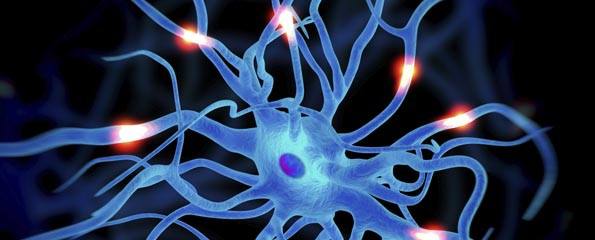Neurology/Neurophysiology Feature Pages
 | The pages featured below have been kindly reviewed by: Associate Professor Karl Ng MB BS (Hons I) FRCP FRACP PhD CCT Clinical Neurophysiology Clinical Neurophysiology (UK) Consultant Neurologist – Sydney North Neurology and Neurophysiology (download referral form and map); Conjoint Associate Professor – Sydney Medical School, University of Sydney; and Editorial Advisory Board Member of the Virtual Neuro Centre.
|
- Disease pages

- Investigation pages
- Treatment pages
- Lifestyle advice and tools
- Living with hyperhidrosis
- Hyperhidrosis disease severity scale tool
- Videos
Disease pages
Focal hyperhidrosis
 | Hyperhidrosis is a condition characterised by excessive perspiration. Unlike normal sweating, the excessive sweating characterising hyperhidrosis is not due to a thermoregulatory response. When excessive sweating occurs at one or more distinct body sites it is referred to as focal hyperhidrosis. It is also known as primary or essential hyperhidrosis. |
For more information, see Focal hyperhidrosis.
Generalised hyperhidrosis
 | Hyperhidrosis is a condition characterised by excessive sweating; that is, the production of more sweat than is required to regulate body temperature. It is caused by non-thermoregulatory stimuli, meaning stimuli other than heat. Normally the body only sweats when it becomes hot. |
For more information, see Generalised hyperhidrosis.
Cervical dystonia
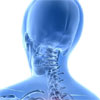 | Cervical dystonia (CD) is the most common dystonia limited to one part of the body, and is specifically localised in the neck muscles. It is characterised by abnormal head posture, involuntary muscle contractions of the cervical spine, head tremor, sustained neck spasms and craniocervical pain. |
For more information, see Cervical Dystonia.
Chronic daily headache
 | Chronic daily headache is a type of frequently occurring headache which may be further classified as either chronic migraine (previously known as transformed migraine) or medication overuse headache. Chronic daily headache is thought to most typically occur as a result of medication overuse, but may also occur without medication overuse, when tension-type, cluster or migraine headaches become more frequent and intense. |
For more information, see Chronic daily headache.
Carpal tunnel syndrome
 | Carpal tunnel syndrome (CTS) is a common painful disorder caused by compression of the median nerve within the wrist. CTS is characterised by pain, numbness and weakness in the parts of the hand supplied by the median nerve. People with CTS may complain of “pins and needles” in the thumb, index and middle fingers, and half of the ring finger, as well as pain in the wrist. |
For more information, see Carpal tunnel syndrome.
Peripheral neuropathies
 | Peripheral neuropathy refers to a diverse group of disease affecting the motor sensory and autonomic nerves lying outside the central nervous system. This can cause a wide variety of symptoms, such as weakness, numbness or sensitivity to touch. |
For more information, see Peripheral neuropathies.
Diabetic neuropathy
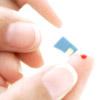 | Diabetic neuropathy is a type of nerve damage that happens in people who have diabetes mellitus. It affects mainly the peripheral nerves. Damage to these nerves makes it hard for the nerves to carry messages to the brain and other parts of the body. This can result in numbness (loss of feeling) or painful tingling in parts of the body. |
For more information, see Diabetic neuropathy.
Epilepsy
 | Epilepsy, the most common serious neurological condition, is the continuing tendency of a person to have seizures. An epileptic seizure is caused by an abnormal electrical discharge from a group of nerve cells in the brain. There are many different types of epilepsy and many different causes. |
For more information, see Epilepsy.
Multiple sclerosis
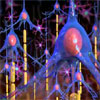 | Multiple sclerosis is a disease of the brain and spinal cord thought to be caused by an autoimmune reaction. It is characterised by loss of the myelin sheath covering nerves of the central nervous system. This reduces the nerve’s conduction speed and causes various neurological symptoms such as loss of vision, motor weakness, abnormal sensations and pain. |
For more information, see Multiple sclerosis.
Spasmodic dysphonia
 | Spasmodic dysphonia (SD) is a rare form of dystonia that affects the laryngeal muscles (vocal cords). It is also known as laryngeal dystonia. SD is characterised by poor vocal motor control during speech, and people with SD exert significant effort and strain to speak. There are two types of SD which display markedly different vocal symptoms. |
For more information, see Spasmodic dysphonia.
Investigation pages
Nerve conduction studies and electromyography (NCS and EMG)
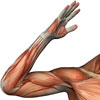 | A nerve conduction study (NCS) involves activating nerves electrically with small safe pulses over several points on the skin, usually on the limbs, and measuring the responses obtained. Usually, the response or signal is measured from the nerve itself or from a muscle supplied by the nerve being activated. This gives information about the state of health of the nerve, muscle and neuromuscular junction. |
For more information, see Nerve conduction studies and electromyography (NCS and EMG).
Electroencephalogram (EEG)
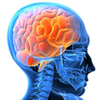 | EEG stands for electroencephalogram. In its commonest form, it is a measurement of the electrical activity of the brain measured from an array of electrodes on the scalp. There are other forms of EEG that are more invasive methods of recording but these are not widely used. By recording the electrical signals, the resulting traces are known as the EEG. |
For more information, see Electroencephalogram (EEG).
Visual evoked potential (VEP)
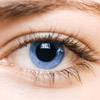 | A visual evoked potential is an evoked potential caused by a visual stimulus, such as an alternating checkerboard pattern on a computer screen. Responses are recorded from electrodes that are placed on the back of your head and are observed as a reading on an electroencephalogram (EEG). These responses usually originate from the occipital cortex, the area of the brain involved in receiving and interpreting visual signals. |
For more information, see Visual evoked potential (VEP).
Somatosensory evoked potential (SSEP)
 | A somatosensory evoked potential (SSEP) is an evoked potential caused by a physical stimulus (usually a small electric pulse). Electrodes positioned over particular areas of the body record responses of the SSEP. A SSEP can most commonly involve stimulation of the median nerve at the wrist, or the posterior tibial nerve at the ankle. This investigation therefore tests the pathway of the sensory nerves to the sensory areas of the brain, even though the stimuli are non-physiological. |
For more information, see Somatosensory evoked potential (SSEP).
Brainstem auditory evoked potential (BAEP)
 | A brainstem auditory evoked potential (BAEP) is an evoked potential caused by an aural stimulus (a sound), usually a series of ‘clicks’. Electrodes positioned on the scalp record responses to the sounds; these are then observed as a reading on an electroencephalogram (EEG). Responses to aural stimuli originate from relay structures within the brainstem. |
For more information, see Brainstem auditory evoked potential (BAEP).
Treatment pages
Botulinum toxin injections for neurological disorders
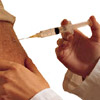 | Botulinum toxin is a neurotoxin that is produced by the bacterium responsible for botulism, clostridium botulinum. The neurotoxin works by weakening the muscles and sometimes by interrupting nerve signal inputs, which can be helpful in states of excessive muscle contraction, hypersecretory disorders, or chronic pain. |
For more information, see Botulinum toxin injections for neurological disorders.
Lifestyle advice and tools
Living with hyperhidrosis
 | Hyperhidrosis is a condition characterised by excessive perspiration in response to non-thermoregulatory stimuli; that is, in response to stimuli other than heat. |
For more information, see Living with Hyperhidrosis.
Hyperhidrosis disease severity scale tool
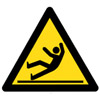 | The hyperhidrosis disease severity scale is a simple, validated measure which can be used to identify hyperhidrosis patients in general practice, or monitor the effects of their treatment. |
For more information, see Hyperhidrosis disease severity scale tool.
Videos
Patient experience: Hyperhidrosis
 | Hyperhidrosis is a condition characterised by excessive perspiration in response to non-thermoregulatory stimuli; that is, in response to stimuli other than heat. Maria and Daniel talk about living with hyperhidrosis and how the condition is treated. |
For more information, see Patient Experience Hyperhidrosis.
Dates
Tags
Created by:

 Login
Login